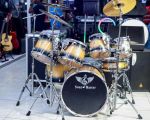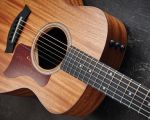Exploring the Different Kinds of Musical Instruments
- 1. Introduction to Musical Instruments
- 2. String Instruments
- 3. Wind Instruments
- 4. Percussion Instruments
- 5. Keyboard Instruments
- 6. Brass Instruments
- 7. Woodwind Instruments
1. Introduction to Musical Instruments
Music is a universal language that transcends boundaries, and at the heart of it all are musical instruments. These instruments come in various forms, and each plays a unique role in creating the diverse sounds we hear in music today. From orchestras to solo performances, understanding the different kinds of musical instruments is essential for any music enthusiast. In this article, we will explore the main categories of musical instruments, including string, wind, percussion, keyboard, brass, and woodwind instruments. Whether you're a beginner or a seasoned musician, learning about these instruments can enhance your appreciation for music.
2. String Instruments
String instruments are among the most versatile and oldest types of musical instruments. They produce sound by vibrating strings, and their sounds can be amplified through hollow bodies or electronic pickups. Examples of string instruments include the violin, guitar, cello, and harp. These instruments can be played by plucking, bowing, or striking the strings. Each string instrument has its own unique tone and is used in various genres of music.
For instance, the violin, commonly used in orchestras, produces a rich, warm tone when played with a bow. In contrast, the guitar is primarily plucked and is a staple in many contemporary music genres like rock, country, and pop. The versatility of string instruments makes them a favorite choice for musicians worldwide.
3. Wind Instruments
Wind instruments, as the name suggests, produce sound when air is blown into or across a mouthpiece. These instruments are divided into two primary categories: brass and woodwind. The sound of wind instruments is largely determined by the material they are made from and the way air is directed through them.
Examples of wind instruments include the flute, saxophone, trumpet, and clarinet. The flute is a woodwind instrument and produces a light, airy sound, while the trumpet, made of brass, offers a bright, bold tone. Wind instruments are commonly found in orchestras, jazz bands, and marching bands, showcasing their versatility in various musical genres.
4. Percussion Instruments
Percussion instruments are unique in that they produce sound when struck, shaken, or scraped. These instruments are known for their ability to produce rhythmic sounds, which are fundamental in many musical compositions. Percussion instruments can be divided into two types: tuned percussion and untuned percussion.
Examples of percussion instruments include drums, cymbals, tambourines, xylophones, and marimbas. Drums, such as the bass drum and snare drum, are often used in rhythm sections of rock bands, while the xylophone, a tuned percussion instrument, produces melodic sounds. Percussion instruments add energy and texture to music, making them essential in both classical and contemporary compositions.
5. Keyboard Instruments
Keyboard instruments are played by pressing keys, which in turn activate hammers, strings, or electrical circuits. These instruments are versatile, capable of producing both melodic and harmonic sounds. The most well-known keyboard instrument is the piano, which has been a cornerstone in both classical and modern music.
Other keyboard instruments include the organ, harpsichord, and synthesizer. The organ produces a rich, resonant sound that is commonly heard in church music, while the synthesizer allows musicians to create electronic sounds and is widely used in electronic music genres. Keyboard instruments are often favored for their ability to produce complex compositions, as they can play multiple notes at once.
6. Brass Instruments
Brass instruments are made from brass or other metals, and they produce sound through the vibration of the player's lips as air is blown through a mouthpiece. These instruments have a bright, powerful sound and are often used in orchestras and brass bands.
Examples of brass instruments include the trumpet, trombone, tuba, and French horn. The trumpet, with its sharp, clear tone, is widely used in jazz and classical music, while the tuba provides a deep, resonant sound that serves as the foundation in brass ensembles. Brass instruments are known for their bold and dynamic contributions to music, adding power and drama to performances.
7. Woodwind Instruments
Woodwind instruments are typically made of wood, though modern versions may be made of metal or plastic. They produce sound when air is directed through a mouthpiece, causing a reed to vibrate, or in the case of flutes, by blowing air across an opening.
Common woodwind instruments include the clarinet, saxophone, oboe, and bassoon. The clarinet, with its smooth, mellow tone, is often heard in classical music, while the saxophone, which is used in both jazz and classical genres, produces a warm, expressive sound. Woodwind instruments have a broad range of tonal qualities, making them highly adaptable to various musical styles.








